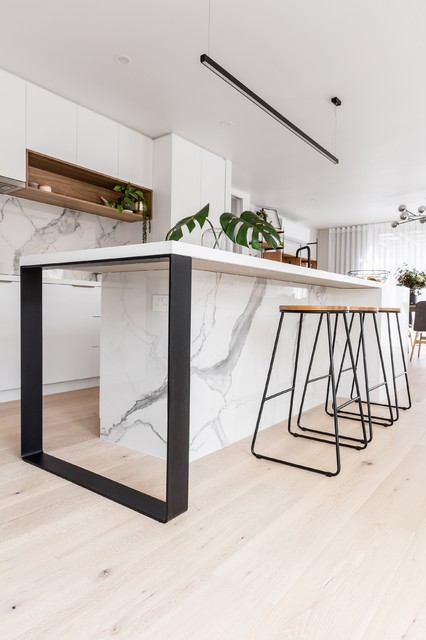The Value of a Sturdy Kitchen Area Island Leg in Developing a Useful Cooking Location
A strong cooking area island leg offers as a basic element in developing a practical cooking atmosphere, providing required assistance for both the kitchen counter and numerous kitchen tasks. As cooking areas develop into multifunctional locations for food preparation, eating, and socializing, the choice of materials and design considerations for island legs comes to be increasingly important.
Benefits of Sturdy Island Legs
Providing necessary assistance, tough cooking area island legs play a crucial function in boosting the performance and longevity of kitchen islands - kitchen island leg. These legs not only bear the weight of the kitchen counter and any added items positioned on the island, but also contribute to the overall security of the framework. A well-supported kitchen area island guarantees that it remains upright and practical, even under hefty use, which is specifically essential in busy kitchen atmospheres
Additionally, tough island legs can improve the visual charm of the kitchen. They supply a strong framework that can enhance different style styles, from modern to conventional. This adaptability allows house owners to personalize their kitchen area islands according to individual taste while guaranteeing that the architectural stability remains uncompromised.
Along with their encouraging function, robust kitchen area island legs can additionally enhance safety and security. A secure island minimizes the danger of accidents triggered by tottering or tipping, which is especially crucial in houses with youngsters or elderly individuals. Strong legs can facilitate a seamless flow of activities, enabling for reliable meal preparation and social interactions within the kitchen space. Inevitably, buying sturdy kitchen area island legs is essential for a functional and aesthetically pleasing cooking location.
Materials for Kitchen Area Island Legs
When selecting materials for cooking area island legs, longevity and visual charm are essential factors to take into consideration,. The most typical materials include hardwood, metal, and engineered wood, each offering distinct benefits.
Hardwood, such as oak, cherry, or maple, is a classic option because of its toughness and ageless elegance (kitchen island leg). It can withstand considerable weight and is immune to use, making it optimal for high-use kitchen settings. Furthermore, wood can be tarnished or painted to enhance different kitchen designs
Metal legs, typically crafted from stainless steel or wrought iron, supply a contemporary and industrial appearance. They are extremely solid and can support considerable lots while being immune to wetness and heat, which is helpful in a cooking location. Metal legs can additionally be easily cleaned, improving their usefulness.

Design Factors To Consider for Stability
The choice of products for kitchen area island legs straight affects the layout considerations for stability. When making a kitchen area island, it is paramount to evaluate the weight-bearing capacity of the picked materials. Much heavier materials, such as strong timber or metal, commonly supply better security, particularly under the tension of everyday usage.
In addition, the leg design should incorporate correct geometry to improve security. A larger base boosts the support area, lessening the risk of wobbling or tipping. Consideration ought to also be offered to the height of the legs; disproportionate leg lengths can lead to discrepancy, endangering the overall stability of the island.
Moreover, the circulation of weight throughout the island is crucial. Ensuring that the leg placement aligns with the heaviest parts, such as countertops and devices, will further enhance security.
Upkeep Tips for Long Life

Depending on the material of the legs-- whether wood, steel, or composite-- proper cleaning methods ought to be employed. Steel legs might require a additional hints light gloss to protect against corrosion and maintain their gloss.
If the cooking area island experiences hefty use, think about reinforcing the legs with added brackets or supports to improve sturdiness. By complying with these maintenance tips, home owners can guarantee their kitchen island legs stay durable and useful for years to come.
Picking the Right Leg Style
Routine maintenance ensures that kitchen area island legs stay durable and functional, but selecting the best leg style is similarly crucial for both looks and support. The option of leg design can considerably affect the overall layout and consistency of your kitchen.

Functionality is another important aspect. For example, thicker legs or those with a durable base can sustain heavier counter tops and equipment, enhancing the island's utility. Alternatively, slim legs may create a ventilated look, ideal for lighter layouts but potentially less supportive.
Conclusion
In summary, the importance of strong kitchen island legs can not be overemphasized in the development of a functional food preparation location. These legs give necessary assistance, boost security, and add to the general visual of the kitchen. By meticulously selecting ideal materials and designs, along with executing proper upkeep methods, the long life and efficiency of cooking area islands can be made certain. Ultimately, purchasing durable island legs is essential to attaining a safe and efficient cooking environment.
A strong kitchen island leg offers as an essential element in establishing a practical food preparation setting, providing needed support for both the counter top and various kitchen area activities.Supplying essential support, durable cooking area island legs play a crucial function in boosting the capability and longevity of cooking area islands. Ultimately, spending in strong kitchen area island legs is crucial for a practical more info here and aesthetically pleasing cooking area.
Factor to consider should additionally be given to the height of the legs; disproportionate leg sizes can lead to inequality, compromising the overall stability of the island.
Wood legs supply warmth and a traditional appearance, while steel legs use a commercial and contemporary feeling.